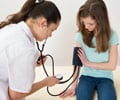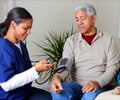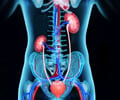- Amlodipine - (https://medlineplus.gov/druginfo/meds/a692044.html )
- Amlodipine AN - (https://www.nps.org.au/assets/medicines/15e74bb6-24f6-484e-af40-a53300ffb37b-reduced.pdf)
- Amlodipine : Interaction with Food, Herbs and Alcohol - (https://www.medindia.net/drugs/drug-food-interactions/amlodipine.htm )
- Drug Discontinuation Effects Are Part of the Pharmacology of a Drug - (https://www.ncbi.nlm.nih.gov/pmc/articles/PMC3200000/ )
- Do calcium supplements interfere with calcium-channel blockers? - (https://www.health.harvard.edu/blood-pressure/do-calcium-supplements-interfere-with-calcium-channel-blockers )
Information about Amlodipine
Generic Name : AmlodipineUp-to-date prescription details regarding Amlodipine are provided here.
Pronunciation : Ham-looh-dip-een
Learn the correct pronunciation of the Amlodipine, understand it's uses, recommended dosages, its indications, how to take, when to take, when not to take, side effects, special precautions, warnings and its and its storage instructions.You will also find a list of the medication's International and Indian brand or trade names, as well as its pricing information. For verification of the information presented on this page or for additional clarifications, it's advisable to consult your doctor.
ICD Code : Y52.1 Therapeutic Classification : Calcium Channel Blockers
Trade Names/Brand Names of Amlodipine
India :
International :
Norvasc, Amvaz, Aforbes, Aken, Amcard, Amlod, Amdipin, Amlodine, Amlodipine 5, Amlopine, Amlostin, Amlovasc , Istin, Amlosun, Lopin, Nelod, Perivasc and Nordip
Why is Amlodipine Prescribed? (Indications)
This medication is a calcium channel blocker, prescribed for high blood pressure and chest pain. It widens blood vessels and improves blood flow by not making the heart pump harder. It widens blood vessels and improves blood flow.When should Amlodipine not be taken? (Contraindications)
Hypersensitivity.What is the dosage of Amlodipine?
Adults- PO- The usual initial dose is 5 mg once daily with a maximum dose of 10 mg once daily.Children- 6 to 17 years- The effective dose is 2.5 mg to 5 mg once daily.
How should Amlodipine be taken?
It comes as a tablet to take by mouth, with or without food.What are the warnings and precautions for Amlodipine?
• Caution should be exercised in patients with history of heart failure or liver disease, any allergy, who are taking other medications, elderly, during pregnancy and breastfeeding.• It may cause drowsiness or dizziness, do not drive a car or operate machinery while taking this medication.
• Avoid alcohol consumption.
• It should not be used in children less than 6 years old.
What are the side effects of Amlodipine?
Most Common - Dizziness, palpitations, flushing and fluid retention.Heart - Abnormal heart rhythm, slow heart rate, chest pain, low blood pressure, poor blood circulation, fainting, fast heart rate and inflammation of blood vessels.
Central Nervous System - Sensory loss, nerve disease, tingling, tremor, unsteadiness, sexual dysfunction (male1 and female), sleepless, nervousness, depression, abnormal dreams, anxiety and depersonalization.
Gastrointestinal - Loss of appetite, constipation, indigestion, difficulty in swallowing, diarrhea, flatulence, inflammation of pancreas, vomiting and gum swelling.
General - Allergic reactions, shock, weakness, back pain, hot flushes, uneasiness, pain, rigors, increased sweating, weight gain and weight loss.
Musculoskeletal - Joint pain, muscle cramps and muscle pain.
Respiratory - Difficulty in breathing and nose bleed.
Skin - Redness of the skin, itching, increased sweating and rash.
Eye and ENT - Abnormal vision, eye inflammation, blurred/double vision, eye pain and ringing in the ear.
Genitourinary - Urinary frequency and night time urination.
Metabolic - Dry mouth, increased sugar level and thirst.
Blood - Bruising, decrease in white blood cells and platelets.















